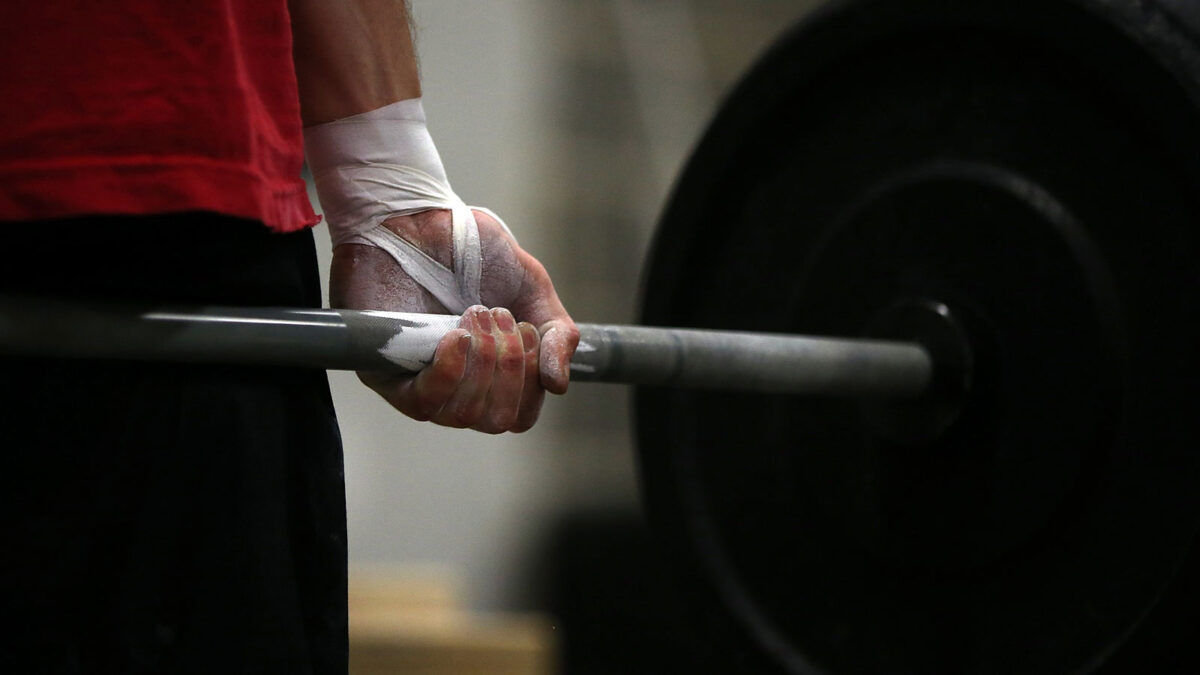The deadlift is already an incredibly effective compound exercise in weightlifting that can help strengthen every bone in your body (and the muscles in your posterior chain), along with increasing core stability. However, in order to reap the benefits, you need to ensure you perform them correctly.
It’s completely understandable if those new to weightlifting are a little terrified at the thought of performing a deadlift because it does bring with it the potential to cause injury if performed incorrectly.
But there could be a variation that is just as, if not more effective, and one that minimises the risk of causing an injury to your lower back.
Introduced by fitness trainer Dr Joel Seedman, founder of Advanced Human Performance, the “best deadlift you’ve never done” sees you performing a deadlift using what Dr Seedman calls the “longitudinal hanging barbell protocol.” Essentially, you have the barbell going through your legs, and you lift it using a v-grip handle attachment.
Joel says using this protocol “not only hammers the entire musculature of the legs including the quads, glutes and hamstrings, but it’s also incredibly low back friendly.”
This is because due to the way the bar hangs and is lifted, it falls directly under your centre of gravity, as opposed to being in front of it, as is the case with the conventional deadlift. This, therefore, helps to reduce the strain placed on your back, as you’re performing more of a simple standing up motion (with resistance) rather than employing more of your back to lift a barbell off the ground.
While it may be lower back friendly, and can target pretty much every muscle in your body, there are still some factors you need to ensure are nailed down perfectly in order to maximise the full potential of this deadlift variation.
Namely, Dr Seedman says, “the bar must sit perfectly in the v-grip handle without tilting. Any deviations in form, shifting, excessive momentum, loss of motor control, or postural deviations will cause the bar to tilt out of control.”
“For instance, if the lifter allows their shoulders to round over or shifts their weight towards their toes rather than driving through the heels, the bar will tilt forward towards the ground.”
In the video above, Dr Joel himself can be seen performing the longitudinal hanging barbell method, combined with 90-degree eccentric isometrics. That latter part means he slowly lowers his body (eccentric movement) until his legs are at 90-degrees.
This slow movement, combined with the importance of correct positioning, requires you as a lifter to use a much more controlled movement than perhaps you’re used to. Joel adds, “If the lifter tries to muscle or yank the weight off the floor rather than smoothly and patiently drive with their legs and hips, the bar will tilt in an almost uncontrollable fashion.”
You might get some odd looks if you were to perform this deadlift variation next time you’re in the gym, but do so and you’ll be improving your functional strength, joint health and athletic performance in no time at all.
Read Next
